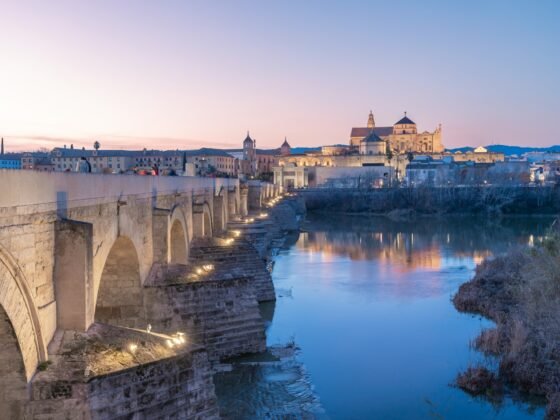Hawaiian luaus are vibrant celebrations that encapsulate the culture, spirit of aloha, and community connections of Hawaii. Originating from ancient Hawaiian traditions, luaus symbolize Hawaiian hospitality through food, music, dance, and communal gatherings. They serve not only as entertainment but also as a narrative form, sharing stories of the land, ancestors, and the bonds within the community through practices like the kalua pig preparation and hula dances. While marking significant life events, luaus have evolved to maintain their cultural essence amidst modern influences, offering locals and visitors alike a deep dive into Hawaiian heritage. Balancing tradition and modernity, luaus remain a testament to Hawaii’s rich cultural history and its ongoing commitment to preserving and sharing the aloha spirit and cultural identity with the world.
Origins of the Luau
Tracing the Hawaiian luau’s roots reveals its centuries-old origin, where early feasts were significant, formal, and steeped in tradition, aimed at honoring gods, celebrating achievements, or launching canoes, with foods bearing symbolic meanings. Initially, these events adhered to strict social and religious protocols under the kapu system, which mandated separate dining for men and women and restricted certain foods to those of higher social status. This changed in 1819 when King Kamehameha II dined with women, dismantling the kapu system’s dietary restrictions and laying the groundwork for the inclusive, communal celebration of today. This shift also saw the luau’s culinary evolution, notably with the introduction of luau stew, blending tradition with modern celebration practices.
Over time, luaus have remained celebrations of life’s milestones, now embodying a mix of ancient traditions and contemporary festivities, offering a sensory feast through traditional foods, music, dance, and storytelling. Historical records highlight the grandeur of royal luaus, illustrating their communal spirit. The advent of tourism transformed many Oahu luaus into popular attractions, showcasing Hawaiian tradition and hospitality. Despite changes, luaus continue to embody the aloha spirit, fostering connections and cultural pride.
The transition from ‘aha’aina to today’s luau underscores the adaptability and resilience of Hawaiian culture, maintaining its heritage while welcoming inclusivity. Luaus stand as vibrant symbols of the Hawaiian community, celebrating the islands’ cultural richness and the shared joy of its people.
Traditional Practices and Foods
At the core of a traditional Hawaiian luau is a feast that celebrates the islands’ culinary heritage, featuring dishes like kalua pig, poi, laulau, poke, and haupia dessert, each offering a taste of Hawaiian history.
Kalua pig, renowned for its smoky flavor, is slow-cooked in an underground oven (imu), wrapped in banana leaves, resulting in tender meat that’s a luau highlight. Poi, a staple made from taro, has a unique texture and taste that complements other dishes, symbolizing the connection to Hawaiian ancestry. Laulau, consisting of fish or pork wrapped in taro leaves and steamed, and poke, known for its seasoned raw fish, reflect the islands’ diverse flavors. Haupia, a coconut milk dessert, provides a sweet finish to the meal, showcasing coconut’s versatility.
More than a meal, a luau is a cultural celebration, incorporating food preparation, communal dining, hula dancing, and Hawaiian music into an experience of joy and unity. These elements combine to make a luau an immersive introduction to Hawaiian hospitality and traditions, inviting participants to explore Hawaii’s rich cultural landscape further. Insights from traditional luaus like those at Old Lāhainā and Maui Luau offer a deeper understanding of this vibrant cultural celebration.
Social and Cultural Significance
In Hawaiian society, luaus are key to celebrating significant events like birthdays, graduations, and weddings, enriching these occasions with cultural depth through storytelling, music, and dance. They also served a vital role in royal courts for celebrating victories, honoring gods, and hosting dignitaries, displaying the ali’i’s (royalty’s) wealth and power with lavish feasts.
The cultural significance of luaus is deeply intertwined with the kapu system, which once governed Hawaiian life with strict social and religious rules, including dietary restrictions. The 19th-century abolition of kapu by King Kamehameha II, allowing men and women to dine together, marked a significant cultural shift towards inclusivity and equality, setting the foundation for today’s luau as a celebration of life and community.
This evolution from the kapu system to contemporary luaus highlights the adaptability of Hawaiian culture, maintaining its heritage while embracing change. Today’s luaus symbolize the enduring aloha spirit, celebrating Hawaiian heritage, resilience, and community values, and remain a vibrant expression of Hawaiian identity and hospitality.
Luau in the Monarchy Era
During Hawaii’s monarchy era, luaus were more than communal events; they served as platforms for diplomacy, royal celebrations, and demonstrations of the royal family’s wealth and generosity. These feasts showcased the islands’ resources, reinforcing social hierarchies and alliances both within the Hawaiian chiefs and with foreign dignitaries.
Under monarchs like Kamehameha III, luaus were extravagant, marking diplomatic events and fostering international relationships. Notably, King Kamehameha III’s mid-19th century luau celebrated the temporary cession to Great Britain, impressing over 1,500 guests with lavish dishes. Similarly, King Kalakaua’s 50th birthday luau in 1886, known for its inclusivity, emphasized his dedication to preserving Hawaiian culture amid global and internal challenges.
These luaus were crucial in expressing the monarchy’s political, social, and cultural messages, showcasing Hawaiian heritage, asserting sovereignty, and promoting unity. They symbolized the blend of tradition and innovation, reflecting Hawaiian society’s resilience and adaptability during a period of significant change, striving to maintain its identity while welcoming new influences.
The Luau in Modern Times
The modern Hawaiian luau has evolved significantly, reflecting a balance between embracing tourism and maintaining traditional practices. As tourism has flourished, commercial luaus have become popular, blending traditional elements like kalua pig and hula with experiences tailored for international visitors. These luaus, while contributing to Hawaii’s economy, sometimes face criticism for diluting traditional customs.
In contrast, traditional family luaus, celebrated for personal milestones, remain intimate and rich in heritage, emphasizing connections to land, ancestors, and community. These events offer a more authentic glimpse into Hawaiian culture, underscoring the importance of familial and communal bonds.
Despite concerns over commercialization, luaus play a vital role in preserving Hawaiian culture, acting as conduits for passing down language, dance, music, and culinary traditions. They allow for the expression of Hawaiian identity and the reinforcement of cultural values, ensuring the continuation of these practices in Hawaii’s cultural fabric.
Luaus exemplify the adaptability and resilience of Hawaiian culture amidst globalization, serving as a bridge between sharing heritage with the world and preserving its authenticity. They highlight the dynamic nature of cultural preservation in a globalized context, demonstrating the ongoing vitality of the aloha spirit and its capacity to captivate people worldwide. This evolution underscores the enduring strength and adaptability of Hawaiian cultural practices, ensuring their relevance and continuation.
Image by Mig OConnell from Pixabay












